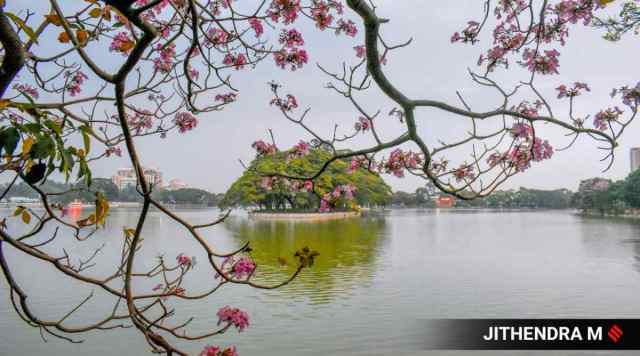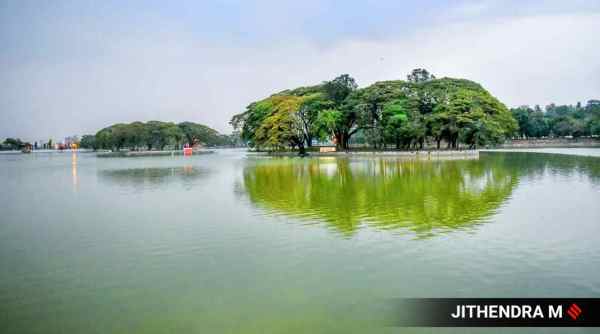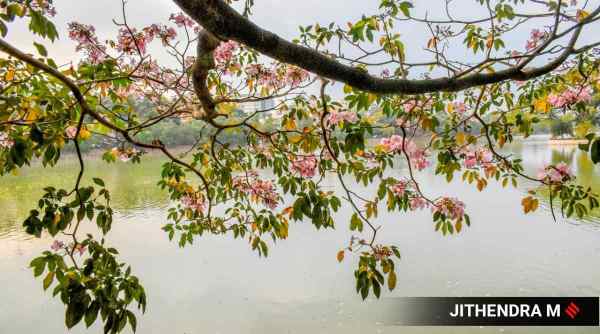- India
- International
Lakes of Bangalore: Ulsoor Lake tells the story of the city
In modern times, it has struggled with issues of pollution, with colonial British and current authorities alike plagued with the dilemma.
 Ulsoor lake of Bengaluru (Express Photo by Jithendra M)
Ulsoor lake of Bengaluru (Express Photo by Jithendra M) The story of Bengaluru, new and old, is incomplete without Ulsoor Lake, which shares its name with the old eponymous neighbourhood. A man-made lake spanning 50 hectares, it has its origin in medieval Karnataka’s long tradition of creating keres, or tanks, for irrigation and other purposes.
In modern times, it has struggled with issues of pollution, with colonial British and current authorities alike plagued with the dilemma.
 Ulsoor lake of Bengaluru (Express Photo by Jithendra M)
Ulsoor lake of Bengaluru (Express Photo by Jithendra M)
The beginning of the lake likely lies with Kempe Gowda and his heir, Kempe Gowda II. According to Bengaluru historian Arun Prasad, this is supported by the nearby Halasuru Someshwara Temple. While legend holds that it was built by Kempe Gowda after a vision from Lord Someshwara, this is inconsistent with Chola-era construction within it. However, the late Vijayanagara-type additions and renovations point to the hand of Kempe Gowda, himself a feudatory of the Vijayanagara Emperor.
The Ulsoor Lake might have been constructed in keeping with the Vijayanagara penchant for tank excavation across their empire. Such constructions had begun even in the centuries before early Vijayanagara—the immense Shantisagara Lake near Channagiri dates back to 1128 AD. Prasad also points out that of the four towers built by Kempe Gowda II, three are located in elevated positions near water bodies.
Moving into the British era, the lake was of considerable importance as a primary source of water as several military units, including cavalry, were stationed nearby. The cleanliness of the lake was a problem that frequently confronted the British.

 Ulsoor lake of Bengaluru (Express Photo by Jithendra M)
Ulsoor lake of Bengaluru (Express Photo by Jithendra M)
An 1844 report recalls an incident a decade prior in which a large number of horses of the 13th Dragoons had fallen sick after drinking the lake’s water. Another issue that concerned the colonial authorities was the “noxious” effect of decaying vegetation in the lake.
In a later report in 1865 by the Mysore Sanitary Commissioner, these concerns manifested in the recommendation that the native soldiers of the Sappers be posted in permanent accommodations for the sake of their health and finances. In fact, to this day the Madras Engineering Group maintains its headquarters near the lake, and is often actively involved in clean-ups, along with training exercises. The same document reported that while the water had markedly improved from the 1830s, sewage inflow was still an issue, with the result that it was recommended that steps be taken to ensure that sewage did not drain into the lake.
The same challenges persist today. The Indian Express had previously reported that the Bruhat Bengaluru Mahanagara Palike (BBMP) among others was fined Rs 23 crore with regard to the condition of the lake. Other issues included slaughterhouse discharge, which was later redirected to a treatment plant.
Buzzing Now
May 03: Latest News
- 01
- 02
- 03
- 04
- 05





































